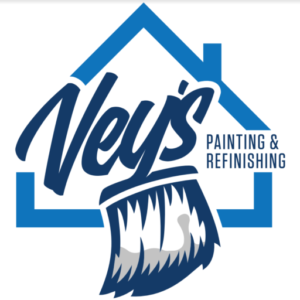Before doing any repairs, one must understand why drywall is used and how it can be damaged. Drywall comes in sheets, which are then cut down to size and sandwiched between two pieces of wood during installation. The weight on these boards places them under constant stress, so they can sometimes crack or break after being hung up for a while.
The first step when beginning any repair is determining what needs fixing and how it must be repaired. This section will cover three common types of drywall damage: cracks, peeling paint and tight joints:
Here are a few common drywall repair tips to make your walls look new again:
#1 Cracks
To repair cracks in your drywall all you need is a joint compound (also known as ‘joint mud’), tape, and some paint. Follow these easy steps:
- Clean out the crack using a metal scraper or putty knife. Make sure that any loose debris is removed from the opening before moving on to step two. If the crack is deep enough, you may need to use a wire brush instead of a scraper.
- Apply a small amount of tape to the drywall and press it into the opening, taking care to smooth out any air bubbles as you go.
3.Use a knife and wood float to fill the gap with the compound. The excess compound should be removed after approximately 30 seconds so that it doesn’t dry on the wall instead of in the crack.
- Use an abrasive pad, such as a sponge or steel wool to smooth out the surface of your newly repaired section. If necessary, use primer and paint before allowing 24 hours for drying time.
#2 Peeling Paint
Repainting an entire room takes a lot of time, but it only requires a little bit to paint over the old color in select areas:
- Using a sharp utility knife or drywall saw, remove any baseboard molding from around the selected area.
- Use sandpaper or steel wool to make sure that all traces of previous paint are removed, along with any bumps or other unwanted surfaces created by previous coats.
- If necessary, sand the wall to create a smooth surface for painting. Use a tack cloth to remove any remaining dust from the wall’s surface before you paint.
#3 Tight Joints
Joint compound can be used on more than just cracks – it is perfect for filling small gaps in your walls as well. The application process is simple:
- Mix the drywall compound with water until it has reached the desired consistency. For really small spaces, try using fast-drying compounds that do not require mixing at all.
- Apply compound over your plaster using an old putty knife or wood spatula if needed. Smooth out any excess material after 5-10 minutes of drying time and allow 24 hours before applying paint.
If you notice tight joints in your new plaster repair or extremely uneven surfaces, use a sanding pole with medium-grit sandpaper on the ends to smooth out the area and get rid of any excess dust from sanding. Lightly sand the area until it’s even enough to paint over.
Choosing a Sheetrock Repair Company Like Vey’s Painting & Refinishing Is The Way
Vey’s Painting & Refinishing is committed to providing you with affordable and high-quality drywall repair services in Houston. Our expert team will visit your home or business to identify the issue, create an efficient plan for repair, and complete it all within budget.
We value our customers’ satisfaction above all else. Trust us when we say that quality workmanship is not only our goal – it’s something that has been part of our family since the very beginning.
At Vey’s Painting & Refinishing, we take sheetrock repair seriously! When you call us, you get the best service at the best rates in Houston. Call us today for your free quote, or contact us here!

